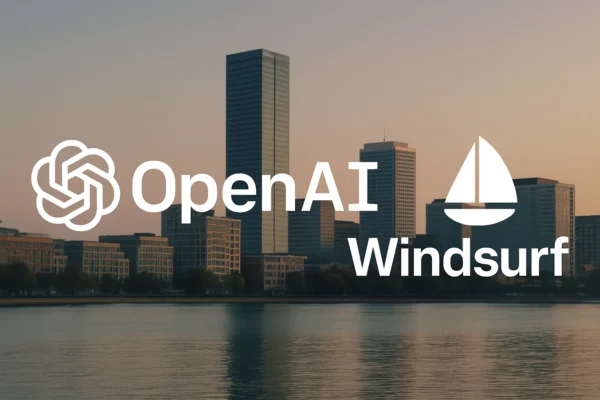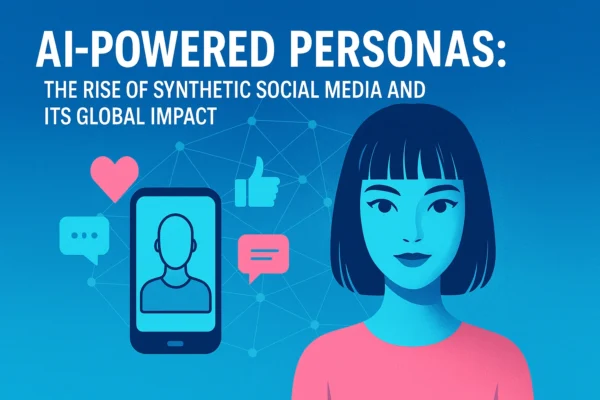
Discover how Microsoft’s BitNet b1.58 2B4T, the world’s largest 1-bit AI model, is redefining AI efficiency. Learn how this open-source model runs on CPUs like Apple’s M2, slashing hardware demands and democratizing AI for tech enthusiasts and developers.
The artificial intelligence landscape is evolving rapidly, with efficiency and accessibility taking center stage. Microsoft’s latest innovation, BitNet b1.58 2B4T, is a groundbreaking 1-bit AI model that promises to make advanced language models more accessible by running efficiently on standard CPUs—including Apple’s M2 chip—without needing expensive GPUs. This leap in AI technology could democratize powerful AI, enabling more devices and developers to harness its capabilities.
What Is BitNet b1.58 2B4T?
BitNet b1.58 2B4T is a large language model (LLM) with 2 billion parameters, making it one of the largest models ever to use 1-bit quantization. Unlike traditional AI models that require high-precision weights (16 or 32 bits), BitNet compresses each weight to just 1.58 bits, using only three values: -1, 0, or 1. This approach, known as ternary quantization, drastically reduces memory and computational requirements.
Key Features:
- 2 billion parameters for robust language understanding
- Trained on 4 trillion tokens, ensuring broad knowledge and context
- Runs efficiently on CPUs (e.g., Apple M2), not just GPUs
- Open-source under the MIT license, encouraging widespread adoption and innovation
Why Is BitNet b1.58 2B4T a Game Changer?
- Hyper-Efficient AI for Everyday Hardware:
Most state-of-the-art AI models require powerful GPUs, which are costly and consume significant energy. BitNet’s 1-bit architecture means it can run smoothly on mainstream CPUs found in laptops, desktops, and even some mobile devices. For tech enthusiasts, this means you can experiment with advanced AI without investing in specialized hardware.
- Competitive Performance:
Despite its lightweight design, BitNet b1.58 2B4T holds its own against popular models like Meta’s Llama 3.2 1B and Google’s Gemma 3 1B. Benchmarks show it performs competitively on tasks such as mathematical reasoning and commonsense problem-solving, all while using less memory and running up to twice as fast as its rivals.
- Open Source and Accessible:
Released under the MIT license, BitNet b1.58 2B4T is freely available for research and commercial use. This openness encourages innovation and allows independent developers, startups, and researchers to build on Microsoft’s work without legal or financial barriers.
How Does BitNet Achieve Its Efficiency?
At the core of BitNet’s efficiency is its use of 1.58-bit quantization. By limiting each weight to three possible values, the model drastically reduces the amount of data needed for storage and computation. This not only lowers memory usage but also speeds up inference—making real-time AI applications on everyday devices a reality.
| Feature | Traditional LLMs | BitNet b1.58 2B4T |
|---|---|---|
| Weight Precision | 16/32 bits | 1.58 bits |
| Parameters | 2B–13B+ | 2B |
| Hardware Needed | GPU | CPU (e.g., M2) |
| Memory Footprint | High | ~10x lower |
| Speed | Standard | Up to 2x faster |
| License | Often restricted | MIT (open source) |
Applications:
- AI on the Edge: BitNet enables AI to run on edge devices—think laptops, tablets, and IoT gadgets—without cloud dependence or high-end GPUs.
- Lower Costs: Developers and startups can deploy AI solutions on affordable hardware, reducing infrastructure costs.
- Sustainable AI: Reduced energy consumption and hardware requirements align with the growing demand for green, sustainable technology.
Limitations and Future Directions:
Currently, BitNet b1.58 2B4T relies on Microsoft’s bitnet.cpp framework, which supports only CPU-based inference. GPU compatibility is not yet available, which may limit adoption among developers accustomed to GPU-centric workflows. However, as the open-source community grows around BitNet, broader hardware support is likely to emerge.
Conclusion: The Democratization of AI Has Begun:
Microsoft’s BitNet b1.58 2B4T marks a pivotal shift in AI development—prioritizing efficiency, accessibility, and sustainability. For tech enthusiasts, this model offers a glimpse into a future where powerful AI is no longer confined to data centers but can run on the devices we use every day. As the AI community embraces this open-source innovation, expect to see a surge in creative applications and a new wave of democratized AI technology.






